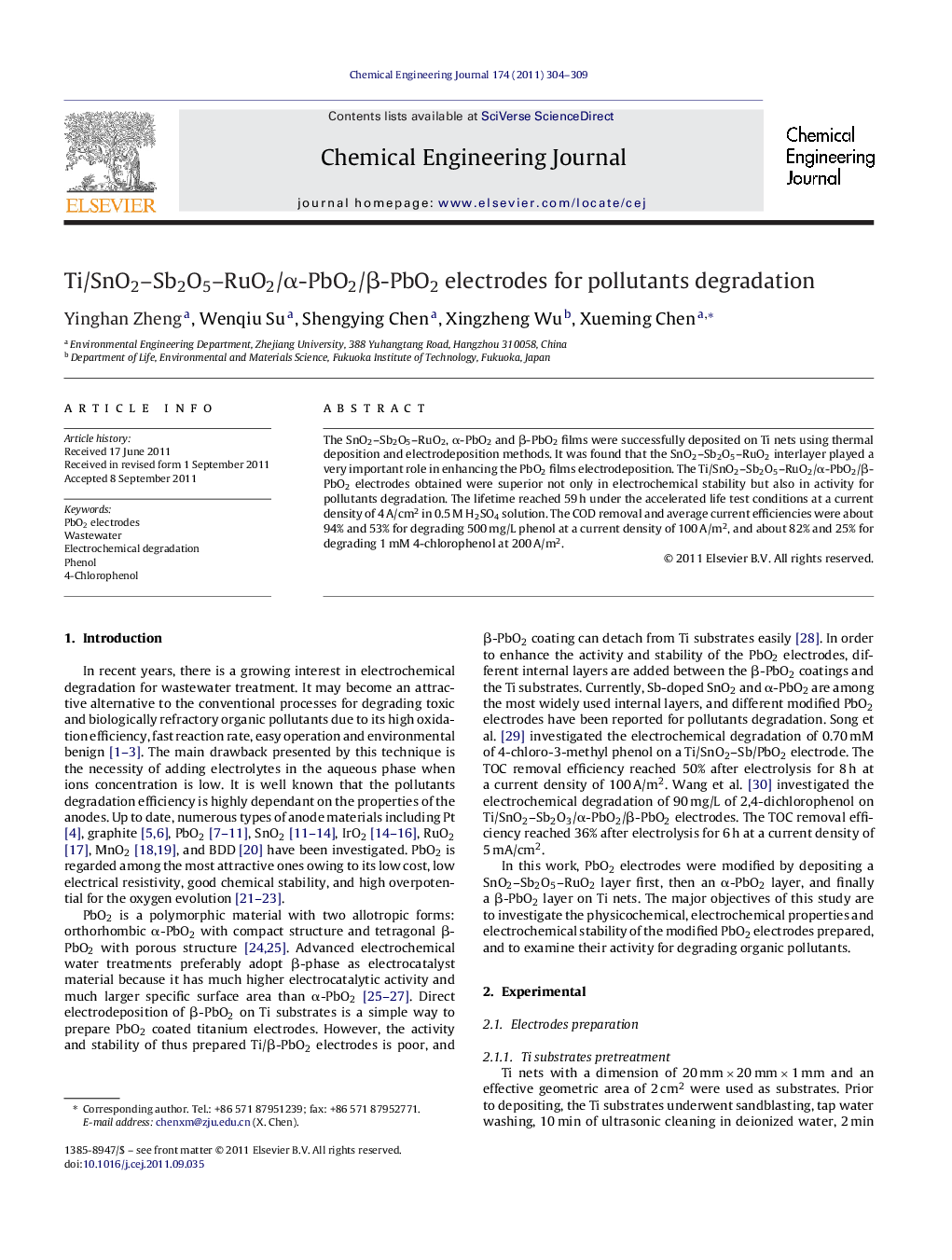| Article ID | Journal | Published Year | Pages | File Type |
|---|---|---|---|---|
| 150536 | Chemical Engineering Journal | 2011 | 6 Pages |
The SnO2–Sb2O5–RuO2, α-PbO2 and β-PbO2 films were successfully deposited on Ti nets using thermal deposition and electrodeposition methods. It was found that the SnO2–Sb2O5–RuO2 interlayer played a very important role in enhancing the PbO2 films electrodeposition. The Ti/SnO2–Sb2O5–RuO2/α-PbO2/β-PbO2 electrodes obtained were superior not only in electrochemical stability but also in activity for pollutants degradation. The lifetime reached 59 h under the accelerated life test conditions at a current density of 4 A/cm2 in 0.5 M H2SO4 solution. The COD removal and average current efficiencies were about 94% and 53% for degrading 500 mg/L phenol at a current density of 100 A/m2, and about 82% and 25% for degrading 1 mM 4-chlorophenol at 200 A/m2.
Graphical abstractFigure optionsDownload full-size imageDownload as PowerPoint slideHighlights► PbO2 electrodes are modified effectively by adding internal layers. ► The electrodes prepared demonstrate good activity and high stability. ► The lifetime reaches 59 h at 4 A/cm2 in 0.5 M H2SO4 solution. ► The COD removal and current efficiency are 94% and 53% for phenol degradation.
